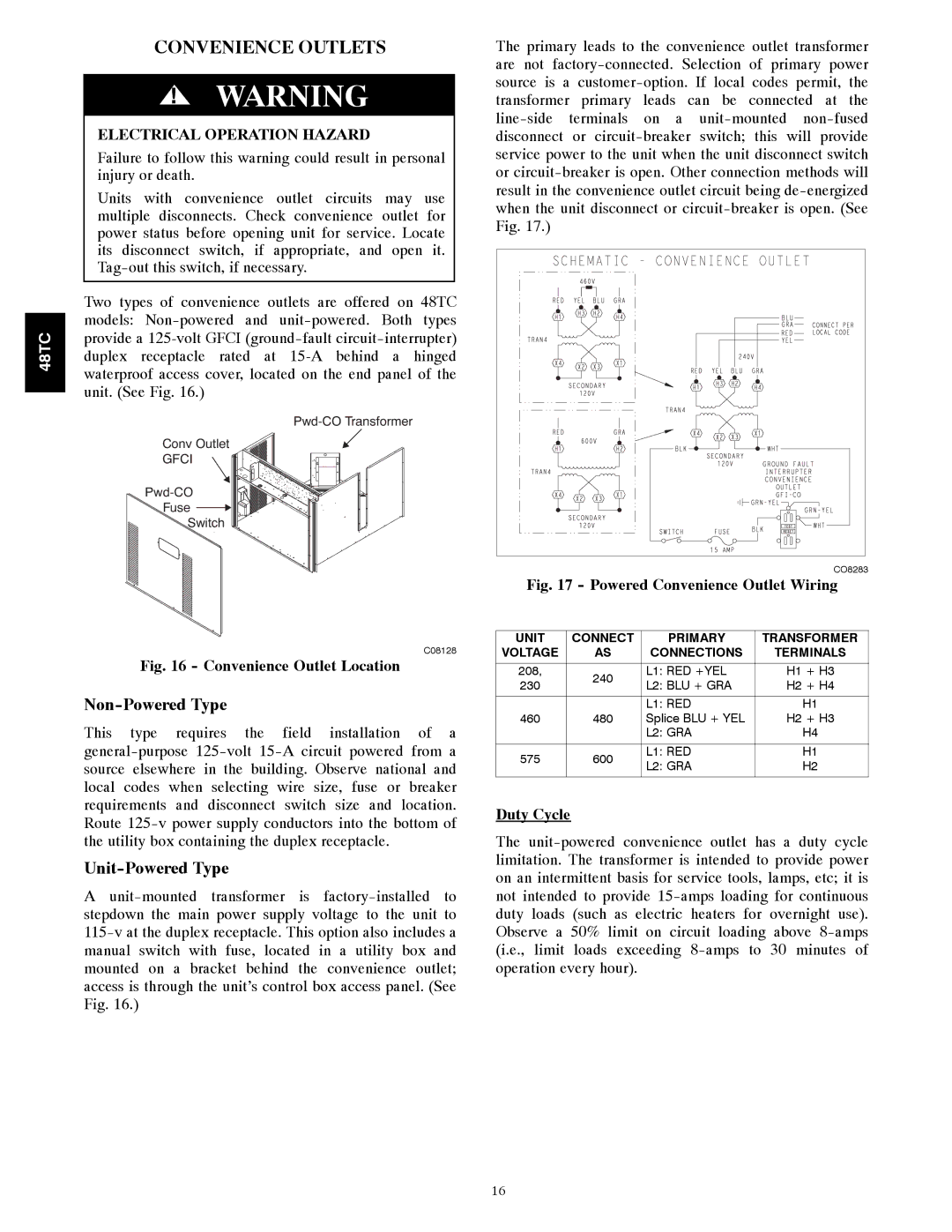
CONVENIENCE OUTLETS
|
| ! | WARNING |
|
|
| ELECTRICAL OPERATION HAZARD |
| |
|
| Failure to follow this warning could result in personal |
| |
|
| injury or death. |
|
|
|
| Units with convenience outlet circuits may use |
| |
|
| multiple disconnects. Check convenience outlet for |
| |
|
| power status before opening unit for service. Locate |
| |
|
| its disconnect | switch, if appropriate, and open it. |
|
|
|
| ||
|
|
|
| |
|
| Two types of convenience outlets are offered on 48TC | ||
|
| models: | ||
48TC |
| |||
| provide a | |||
| duplex receptacle rated at | |||
|
| |||
|
| waterproof access cover, located on the end panel of the | ||
|
| unit. (See Fig. 16.) | ||
|
| |||
Conv Outlet
GFCI
Fuse ![]()
Switch
C08128
Fig. 16 - Convenience Outlet Location
Non-Powered Type
This type requires the field installation of a
Unit-Powered Type
A
The primary leads to the convenience outlet transformer are not
CO8283 |
Fig. 17 - Powered Convenience Outlet Wiring
UNIT | CONNECT | PRIMARY | TRANSFORMER | |
VOLTAGE | AS | CONNECTIONS | TERMINALS | |
|
|
|
| |
208, | 240 | L1: RED +YEL | H1 + H3 | |
230 | L2: BLU + GRA | H2 + H4 | ||
| ||||
|
|
|
| |
|
| L1: RED | H1 | |
460 | 480 | Splice BLU + YEL | H2 + H3 | |
|
| L2: GRA | H4 | |
|
|
|
| |
575 | 600 | L1: RED | H1 | |
L2: GRA | H2 | |||
|
| |||
|
|
|
|
Duty Cycle
The
16
